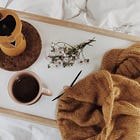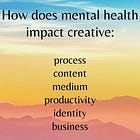Moving Beyond Limits: How Artists Transform Motor Challenges into Creative Innovation
When Hands, Arms, and Bodies Change: Reimagining Movement in Creative Practice

Movement is the hidden language of artistic creation. Every brushstroke, every clay manipulation, every pencil line emerges from complex coordination between intention and motor execution. When injury, illness, or progressive conditions alter this fundamental relationship, artists face more than technical challenges … we encounter questions about identity, capability, and creative authenticity.
Today I’m thinking about how motor function changes affect artistic practice and I’ve tried to provide some practical strategies for developing new movement vocabularies that serve creative expression. Rather than viewing motor limitations as obstacles to overcome, perhaps they can become catalysts for innovation and discovery.
The artists whose experiences inform this guide demonstrate that motor adaptation is not about making do with less, but about discovering different possibilities. Their innovations often prove valuable far beyond individual accommodation, contributing to broader understanding of how bodies and materials interact in creative work.
I have developed these ideas after decades of lived experience, interview-based insights, and deep research into the complex relationship between art and health. They are based on my unique 6-part framework. If you are interested in assistance in applying these ideas to your own life: Order a Creative Health Assessment or Book a 1:1 Coaching Call.

Understanding Motor Function in Creative Work: The Complexity of Artistic Movement
Artistic creation often depends on multiple types of motor function working in coordination:
Gross Motor Skills involve large muscle groups and whole-body coordination. Painters standing at easels, sculptors maneuvering heavy materials, and printmakers operating presses all rely on gross motor control for workspace navigation and material handling.
Fine Motor Skills encompass precise finger and hand movements required for detailed work. Drawing, calligraphy, jewelry making, and intricate painting techniques demand sophisticated fine motor coordination that develops over years of practice.
Bilateral Coordination refers to the ability to use both hands together effectively. Many artistic techniques require coordinated bilateral movement: holding paper while drawing, supporting canvas while painting, or managing multiple tools simultaneously.
Motor Planning involves the cognitive organization of movement sequences. Complex artistic techniques require planning and executing coordinated movement patterns that become increasingly automatic with practice.
Proprioceptive Awareness provides information about body position and movement in space. Artists rely on proprioceptive feedback to gauge pressure, judge distances, and maintain consistent movements without constant visual monitoring.
When any of these motor systems changes due to injury, illness, or aging, artists must develop alternative approaches that work with rather than against their altered movement patterns.
Common Motor Function Changes
Repetitive Strain Injuries (RSI) develop from overuse of specific movement patterns. Artists who repeat similar motions for hours daily (sketch artists, violinists, computer artists, knitters …) often develop RSI that makes familiar movements painful or impossible.
For example, an architectural illustrator might develop severe RSI in their drawing hand after years of detailed technical work. When precise linework becomes unbearable, they might explore digital tools that require different motor patterns. Stylus work with pressure-sensitive tablets could allow them to create technical drawings using broader arm movements rather than fine finger control, not only resolving pain but introducing new digital capabilities.
Arthritis affects joint flexibility, strength, and pain levels in ways that can make traditional art tools difficult to manipulate. Both osteoarthritis and rheumatoid arthritis create specific challenges around grip strength, joint mobility, and sustained use patterns.
Consider a watercolor artist who has painted for decades but finds arthritis makes traditional brush grips increasingly painful. Rather than abandoning their medium, they might experiment with brush handle modifications such as foam grips to reduce precision grip strength requirements, angled handles that work with rather than against changed joint mobility. They may also discover that shorter painting sessions with frequent breaks actually improve work quality by maintaining hand comfort throughout the creative process.
Neurological Conditions including Parkinson's disease, multiple sclerosis, and stroke effects can alter movement control, coordination, and muscle strength in complex ways that require sophisticated adaptation strategies.
An artist who develops essential tremor might initially feel devastated that their previous detailed botanical illustrations have become impossible. However, they could begin exploring how different tools and techniques work with rather than fight against the tremor. Broader brushes and ink washes might allow the tremor to create organic, naturalistic textures that enhance rather than detract from botanical accuracy, resulting in work with a dynamic, living quality their previous controlled technique never achieved.
Traumatic Injuries can suddenly eliminate familiar movement patterns, requiring rapid adaptation to entirely different motor capabilities.
A muralist who damages their shoulder in an accident might find themselves unable to work at the large scales that have defined their career. This injury could force exploration of smaller formats, but more importantly, it might change their relationship to spatial composition entirely. Working at smaller scales could require different organizational strategies and reveal compositional possibilities that large-scale work had obscured, influencing their approach even if shoulder function later returns.

Understanding the Spectrum of Motor Changes
These examples represent just a fraction of the complex motor adaptations artists may encounter throughout their creative lives. Motor function changes exist on a vast spectrum, from temporary challenges like recovering from surgery or managing seasonal arthritis flares, to progressive conditions that evolve over time, to sudden changes that require immediate adaptation strategies.
Each artist's motor signature is unique, shaped by their medium, technique, workspace setup, and individual body mechanics. What affects one artist's practice significantly may barely impact another working in the same medium. Some changes primarily affect grip strength, others influence range of motion, coordination, endurance, or pain tolerance. Some manifest as morning stiffness, others as fatigue after extended work periods.
Understanding that motor adaptation is deeply individual helps explain why universal solutions rarely exist. Instead, the most effective adaptations emerge from careful observation of personal patterns, experimentation with alternatives, and willingness to view changes as opportunities for creative evolution rather than limitations to endure.
Assessment Exercise: Personal Motor Function Analysis
Before developing adaptation strategies, understanding your specific motor function patterns and changes provides crucial foundation for effective modification.
Current Capabilities Inventory
1. Baseline Documentation
Document your current motor function patterns during normal creative work:
Movement Range Assessment: Throughout one week of normal creative work, note any movements that cause discomfort, fatigue, or difficulty. Include reaching, gripping, lifting, fine manipulation, and sustained positions.
Endurance Tracking: Time how long you can comfortably maintain different creative activities before experiencing fatigue, discomfort, or decreased control. Include both fine motor tasks (detailed drawing) and gross motor activities (canvas manipulation).
Tool Relationship Analysis: Examine your relationship with different creative tools. Which feel comfortable and controlled? Which require effort or cause discomfort? Which could you use for extended periods versus brief sessions?
Workspace Navigation: Document how you move through your creative space. Which movements feel natural and efficient? Which require adaptation or cause difficulty?
2: Challenge Identification
Focus specifically on identifying movement patterns that feel challenging or have changed over time:
Pain and Discomfort Mapping: Use a body diagram to mark areas that experience discomfort during creative work. Note whether discomfort appears immediately, develops gradually, or persists after creative sessions.
Precision and Control Assessment: Test your precision control with familiar tasks at different times of day and under different conditions (fatigue levels, stress, time pressure). Document when control feels optimal versus compromised.
Strength and Endurance Variables: Identify factors that affect your motor capabilities: time of day, weather, stress levels, medication timing, recent activity levels.
3. Adaptation Priority Setting
Next, analyze your findings to create a strategic approach to motor adaptation:
Severity and Impact Analysis
Review your documentation to identify which motor limitations create the most significant barriers to your creative work. Consider both frequency (how often the limitation affects you) and severity (how much it disrupts your creative process when it occurs). A minor discomfort that happens daily may require more urgent attention than severe pain that occurs rarely.
Resource and Feasibility Assessment
Evaluate each potential adaptation for practicality within your current circumstances:
Financial considerations: What modifications require investment in new tools, workspace changes, or professional support?
Time requirements: Which adaptations need extensive relearning versus quick adjustments?
Social and professional factors: How might changes affect your ability to work with others or meet professional requirements?
Space and equipment needs: What modifications are possible within your current workspace?
Interconnected Benefits
Look for adaptations that address multiple challenges simultaneously. For example, adjusting workspace height might reduce both back strain and arm fatigue, while switching to lighter-weight tools could help with both grip strength limitations and endurance issues. These multi-benefit solutions often provide the most significant improvements with the least disruption.
Timing Strategy
Consider the optimal sequence for implementing changes:
Immediate needs: Which adaptations could provide relief right away with minimal adjustment?
Gradual transitions: Which changes require time to develop new muscle memory or technique?
Experimental phases: Which adaptations need testing periods to determine effectiveness?
Seasonal considerations: Are there times of year when your motor challenges are more or less pronounced?
Success Metrics
Define how you'll measure whether adaptations are working:
Comfort indicators: Reduced pain, less fatigue, improved endurance
Creative quality: Maintained or improved artistic expression and technical execution
Productivity measures: Ability to work for desired durations and complete projects
Satisfaction factors: Enjoyment in the creative process, sense of creative authenticity
Remember that adaptation is not a one-time solution but an ongoing conversation between your changing capabilities and your creative aspirations. The innovations you develop may not only serve your own practice but contribute to a broader understanding of how diverse bodies can engage in meaningful creative work. I hope this provides you with a good start from where you are at today.
If you read this far, perhaps you liked the work. The work takes work. Support it if you can:





reframing motor challenges as creative opportunities in themselves is fascinating & important for inclusivity. because in truth, the people who need healing the most (particularly from creative outlets) are often also impaired by illness or physical deficits of some sort. the joy of almost experimenting with ourselves to create within our own limitations can be FUN, EXCITING, and yes, a bit discouraging at times. But ultimately a road to healing I find. And it's one filled with compassionate.
Loved this practical approach Kathryn, and I sooo so so so appreciate you even writing about this topic. I have been seeing a lot of (truthfully) very general "healing" work that doesn't take into consideration the bodies and minds of individuals who are not able-bodied. it is healing just to see your perspective and experience.
be well <3